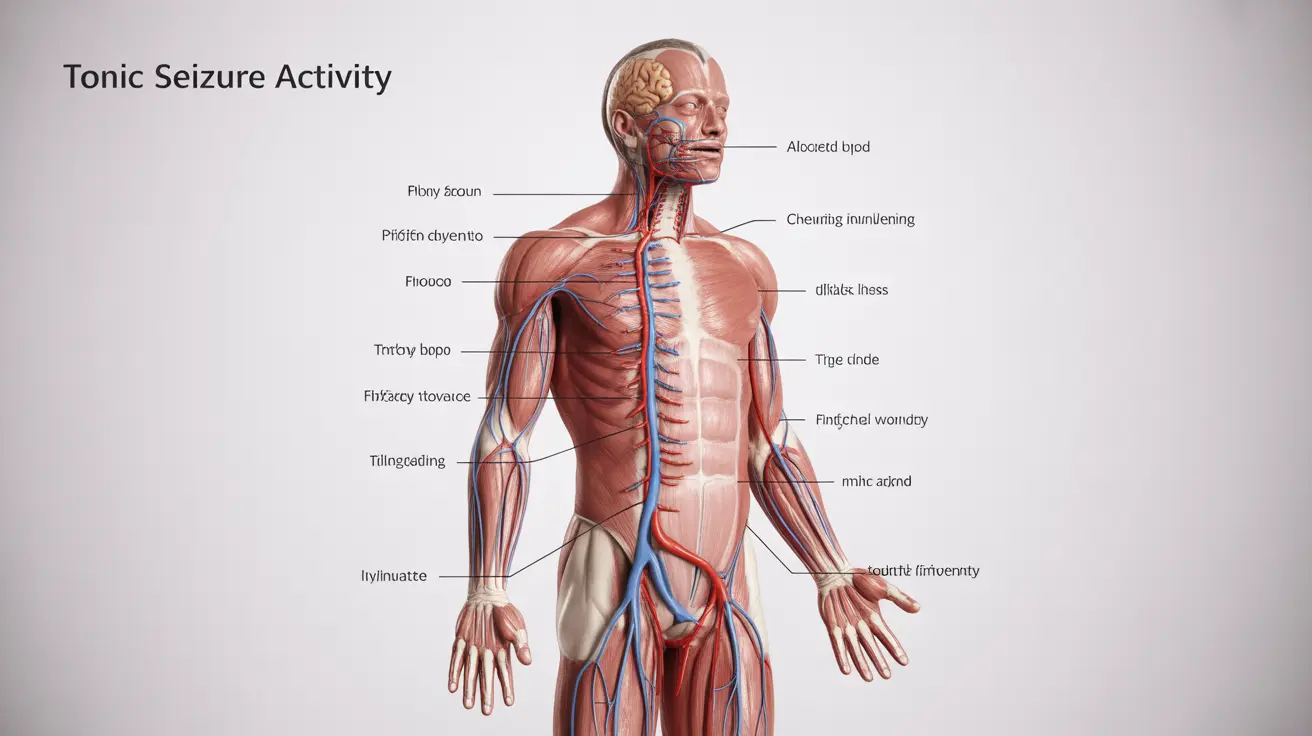Tonic seizures are a distinct type of epileptic event that can be concerning for both patients and caregivers. These seizures primarily affect muscle tone and consciousness, making it crucial to understand their unique characteristics and warning signs for proper management and treatment.
In this comprehensive guide, we'll explore the key symptoms of tonic seizures, how they differ from other seizure types, and what steps you should take if you or someone you know experiences these episodes.
Key Characteristics and Primary Symptoms
Tonic seizures have several distinctive features that set them apart from other seizure types. Understanding these characteristics is essential for proper identification and response:
Muscle Changes
The most prominent symptom of a tonic seizure is sudden muscle stiffening, typically affecting:
- Back muscles
- Arm and leg muscles
- Neck and face muscles
- Chest and abdominal muscles
Consciousness and Awareness
During a tonic seizure, patients may experience:
- Sudden loss of consciousness
- Brief periods of confusion
- Limited awareness of surroundings
- Memory gaps about the event
Duration and Pattern
Tonic seizures typically last between 10 to 20 seconds, though this can vary among individuals. The sudden onset and brief duration are characteristic features that help distinguish them from other seizure types.
Distinguishing Features from Other Seizure Types
Unlike tonic-clonic seizures, which involve both stiffening and rhythmic jerking movements, tonic seizures primarily involve muscle stiffening alone. This distinction is crucial for proper diagnosis and treatment planning.
Risk Factors and Common Causes
Several factors can increase the likelihood of experiencing tonic seizures:
- Genetic predisposition
- Brain injuries or trauma
- Developmental disorders
- Certain medications
- Sleep deprivation
- Stress and anxiety
Diagnostic Process
Healthcare providers typically use multiple approaches to diagnose tonic seizures accurately:
- Detailed medical history review
- Physical examination
- Electroencephalogram (EEG)
- Brain imaging studies
- Blood tests to rule out other conditions
Treatment Approaches
Managing tonic seizures often requires a comprehensive treatment plan that may include:
- Anti-epileptic medications
- Lifestyle modifications
- Regular medical monitoring
- Emergency response planning
- Support system development
Frequently Asked Questions
What are the main symptoms of a tonic seizure, and how do I recognize them?
The primary symptoms include sudden muscle stiffening, particularly in the back, arms, and legs, often accompanied by a brief loss of consciousness. The episode typically lasts 10-20 seconds, and the person may appear rigid or fall if standing.
How are tonic seizures different from tonic-clonic or other types of seizures?
Tonic seizures involve only the stiffening phase, while tonic-clonic seizures include both stiffening and rhythmic jerking movements. Tonic seizures are usually shorter in duration and may have less post-seizure confusion.
What causes tonic seizures, and who is most at risk for developing them?
Tonic seizures can be caused by genetic factors, brain injuries, developmental disorders, or certain medications. People with Lennox-Gastaut syndrome and those with a family history of epilepsy are at higher risk.
How are tonic seizures diagnosed, and what tests might a doctor use?
Doctors typically use a combination of medical history review, physical examination, EEG monitoring, and brain imaging studies like MRI or CT scans. They may also perform blood tests to rule out other conditions.
What are the treatment options for tonic seizures, and when should I see a specialist?
Treatment usually involves anti-epileptic medications, lifestyle modifications, and regular medical monitoring. You should see a specialist if you experience any seizure activity, particularly if it's new or increasing in frequency. Emergency medical attention is necessary for prolonged seizures or clusters of seizures.




